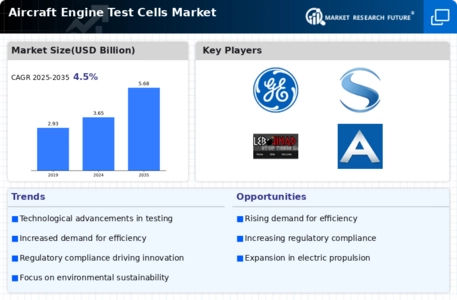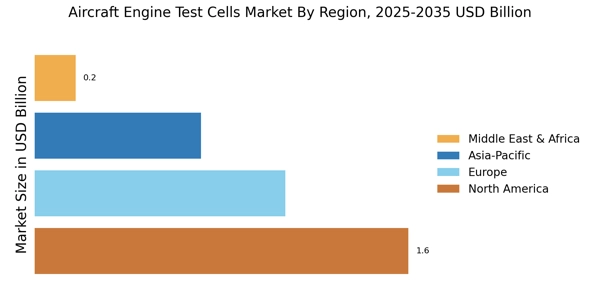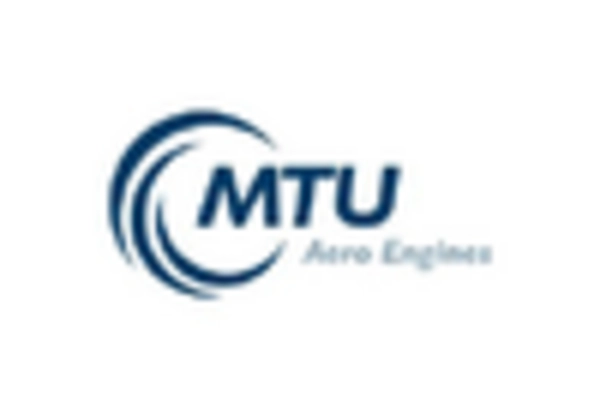Aircraft Engine Test Cells Market Summary
As per Market Research Future analysis, the Aircraft Engine Test Cells Market Size was estimated at 3.65 USD Billion in 2024. The Aircraft Engine Test Cells industry is projected to grow from 3.814 USD Billion in 2025 to 5.925 USD Billion by 2035, exhibiting a compound annual growth rate (CAGR) of 4.5% during the forecast period 2025 - 2035
Key Market Trends & Highlights
The Aircraft Engine Test Cells Market is poised for robust growth driven by technological advancements and increasing regulatory compliance.
- Technological advancements are enhancing the efficiency and accuracy of aircraft engine testing processes.
- North America remains the largest market, while the Asia-Pacific region is emerging as the fastest-growing area for aircraft engine test cells.
- The turbofan segment dominates the market, whereas the turboshaft segment is experiencing the fastest growth due to rising military aviation demands.
- Increasing demand for aircraft testing and stringent regulatory standards are key drivers propelling market expansion.
Market Size & Forecast
| 2024 Market Size | 3.65 (USD Billion) |
| 2035 Market Size | 5.925 (USD Billion) |
| CAGR (2025 - 2035) | 4.5% |
Major Players
General Electric (US), Rolls-Royce (GB), Pratt & Whitney (US), Honeywell (US), MTU Aero Engines (DE), Safran (FR), Boeing (US), Airbus (FR), Woodward (US)


















Leave a Comment